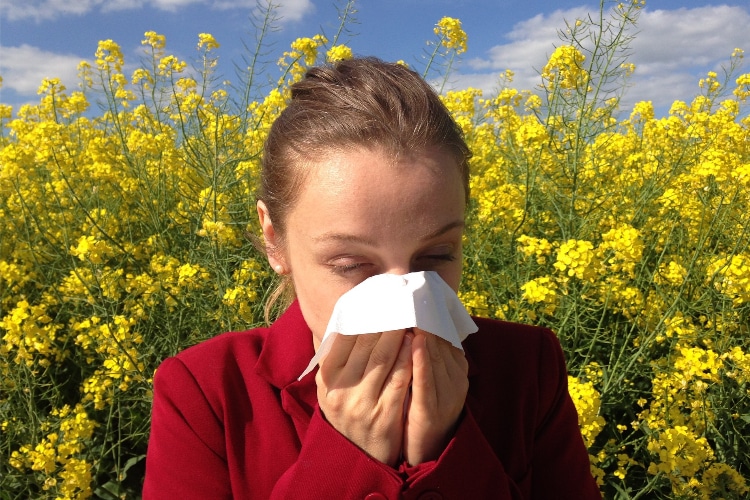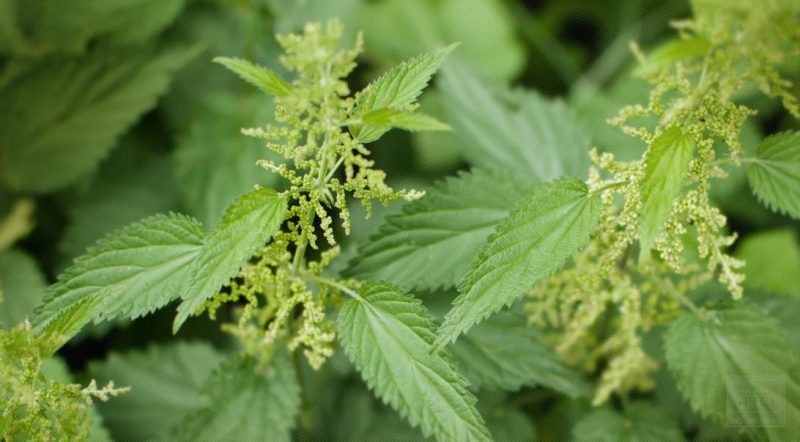
Why Are People Allergic to Peanuts?
For 1 to 2 percent of the global population, eating a peanut butter and jelly sandwich could be potentially fatal. What makes peanut allergies so lethal, and why is the number of peanut-allergy sufferers on the rise? This week on Reactions, Andrew Maynard from Risk Bites explains what causes peanut allergies and why we need to rethink how we prevent them.
Peanuts are among the most common allergy-causing foods, and they often find their way into things you wouldn’t imagine. Take chili, for example: It may be thickened with ground peanuts.
Peanuts aren’t actually a true nut; they’re a legume (in the same family as peas and lentils). But the proteins in peanuts are similar in structure to those in tree nuts. For this reason, people who are allergic to peanuts can also be allergic to tree nuts, such as almonds, Brazil nuts, walnuts, hazelnuts, macadamia nuts, pistachios, pecans, and cashews.

Table of Contents
What Happens With a Nut or Peanut Allergy?
The body’s immune system normally fights infection. But, when someone is allergic to tree nuts or peanuts, the immune system overreacts to proteins in these foods. Every time the person eats (or, in some cases, handles) a peanut or tree nut, the body thinks the proteins are harmful invaders. The immune system responds by kicking into high gear to fend off the “invader.” This causes an allergic reaction, in which chemicals like histamine are released in the body.
The release of these chemicals can cause someone to have some or all of the following problems:
- wheezing
- trouble breathing
- coughing
- hoarseness
- throat tightness
- stomachache
- vomiting
- diarrhea
- itchy, watery, or swollen eyes
- hives
- red spots
- swelling
- a drop in blood pressure
Reactions to foods, like peanuts and tree nuts, can be different. It all depends on the person — and sometimes the same person can react differently at different times.
Nut and peanut allergies can cause a severe reaction called anaphylaxis. Anaphylaxis may begin with some of the same symptoms as a less severe reaction, but then quickly worsen, leading someone to have trouble breathing, feel lightheaded, or to pass out. If it is not treated quickly, anaphylaxis can be life threatening.
Although a small amount of peanut protein can set off a severe reaction, it is rare that people get an allergic reaction just from breathing in small particles of nuts or peanuts, since the protein has to be ingested (swallowed) to cause a reaction. Most foods with peanuts in them don’t allow enough of the protein to escape into the air to cause a reaction. And just the smell of foods containing peanuts won’t produce a reaction because the scent does not contain the protein.
In very rare cases when people do react to airborne particles, it’s usually in an enclosed area (like a restaurant or bar) where lots of peanuts are being cracked from their shells. The person inhales and then swallows the protein, and this can lead to a reaction when the protein gets digested.
Although some people outgrow certain food allergies over time (like milk, egg, soy, and wheat allergies), peanut and tree nut allergies are lifelong in many people.
Living With Peanut or Tree Nut Allergy
If allergy skin testing shows that someone has a peanut or tree nut allergy, a doctor will provide guidelines on what to do.
The best way to prevent a reaction in someone with a nut allergy is to avoid peanuts and tree nuts. Avoiding nuts means more than just not eating them. It also means not eating any foods that might contain tree nuts or peanuts as ingredients.
The best way to be sure a food is nut free is to read the label. Manufacturers of foods sold in the United States must state on their labels whether foods contain peanuts or tree nuts. Check the ingredients list first.

After checking the ingredients list, look on the label for phrases like these:
- “may contain nuts”
- “produced on shared equipment with nuts or peanuts”
People who are allergic to nuts also have to avoid foods with these statements on the label. Although these foods might not use nut ingredients, the warnings are there to let people know the food may contain small traces of nuts. That can happen through something called “cross-contamination,” when nuts get into a food product because it is made or served in a place that uses nuts in other foods.
Some of the highest-risk foods for people with peanut or tree nut allergy include:
Cookies and baked goods
Even if baked goods don’t contain nut ingredients, it is possible that they came into contact with peanut or tree nuts through cross-contamination. Unless you know exactly what went into a food and where it was made, it’s safest to avoid store-bought or bakery cookies and other baked goods.
Candy
Candies made by small bakeries or manufacturers (or homemade candies) may contain nuts as a hidden ingredient. The safest plan is to eat only candies made by major manufacturers whose labels show they are safe.
Ice cream
Unfortunately, cross-contamination is common in ice cream parlors because of shared scoops. It’s also a possibility in soft-serve ice cream, custard, water ice, or yogurt places because the same dispensing machine and utensils are often used for lots of different flavors. Instead, do as you would for candy: Buy tubs of ice cream at the supermarket and be sure they’re made by a large manufacturer and the labels indicate they’re safe.
Asian, African, and other cuisines
African and Asian (especially Thai, Chinese, and Indian) foods often contain peanuts or tree nuts. Mexican and Mediterranean foods may also use nuts, so the risk of cross-contamination is high with these foods.
Sauces
Many cooks use peanuts or peanut butter to thicken chili and other sauces.
Always proceed with caution, even if you are used to eating a particular food. Even if you’ve eaten a food in the past, manufacturers sometimes change their processes — for example, switching suppliers to a company that uses shared equipment. And two foods that seem the same might also have differences in their manufacturing.
Here are some other precautions you can take:
- Be on the watch for cross-contamination that can happen on kitchen surfaces and utensils — everything from knives and cutting boards to the toaster. Make sure the knife another family member used to make peanut butter sandwiches is not used to butter your bread and that nut bread are not toasted in the same toaster you use.
- Avoid cooked foods you didn’t make yourself — anything with an unknown list of ingredients.
- Tell everyone who handles the food you eat, from relatives to restaurant waitstaff, that you have a nut allergy. If the manager or owner of a restaurant is uncomfortable about your request for peanut- or nut-free food preparation, don’t eat there.
- Make school lunches and snacks at home where you can control the preparation.
- Be sure your school knows about your allergy and has an action plan in place for you.
- Keep rescue medicine (including epinephrine) on hand at all times — not in your locker, but in a pocket, purse, or bookbag that’s with you.
Managing Serious Reactions
If someone is diagnosed with a life-threatening peanut or tree nut allergy (or any kind of life-threatening food allergy), the doctor will want that person to carry an epinephrine(pronounced: eh-puh-NEH-frin) auto-injector in case of an emergency. Epinephrine comes in two types of easy-to-carry containers, one about the size of a large marker and the other about the size of a small cellphone. It’s easy to use — if you need to carry epinephrine, your doctor will show you how to use it.
Keeping epinephrine on hand at all times should be just part of your action plan for living with a peanut or tree nut allergy. It’s also a good idea to carry an over-the-counter (OTC) antihistamine as this can help treat mild allergy symptoms. Use antihistamines in addition to — not as a replacement for — the epinephrine shot in life-threatening reactions, and always use the epinephrine shot as the first treatment. Get emergency care after epinephrine is used, because a second reaction can happen up to 4 hours or even longer after the first reaction.
Living with allergies can seem hard at times. But as more and more people are diagnosed with food allergies, businesses and restaurants are increasingly aware of the risks they face.
If friends you’re visiting or eating lunch with don’t know about your allergy, tell them in plenty of time to make some simple preparations (such as not sharing your drink after eating that peanut butter sandwich!). Chances are, they’ll understand. As your friends, they probably hope you’ll be as considerate when it comes to taking care of them!






